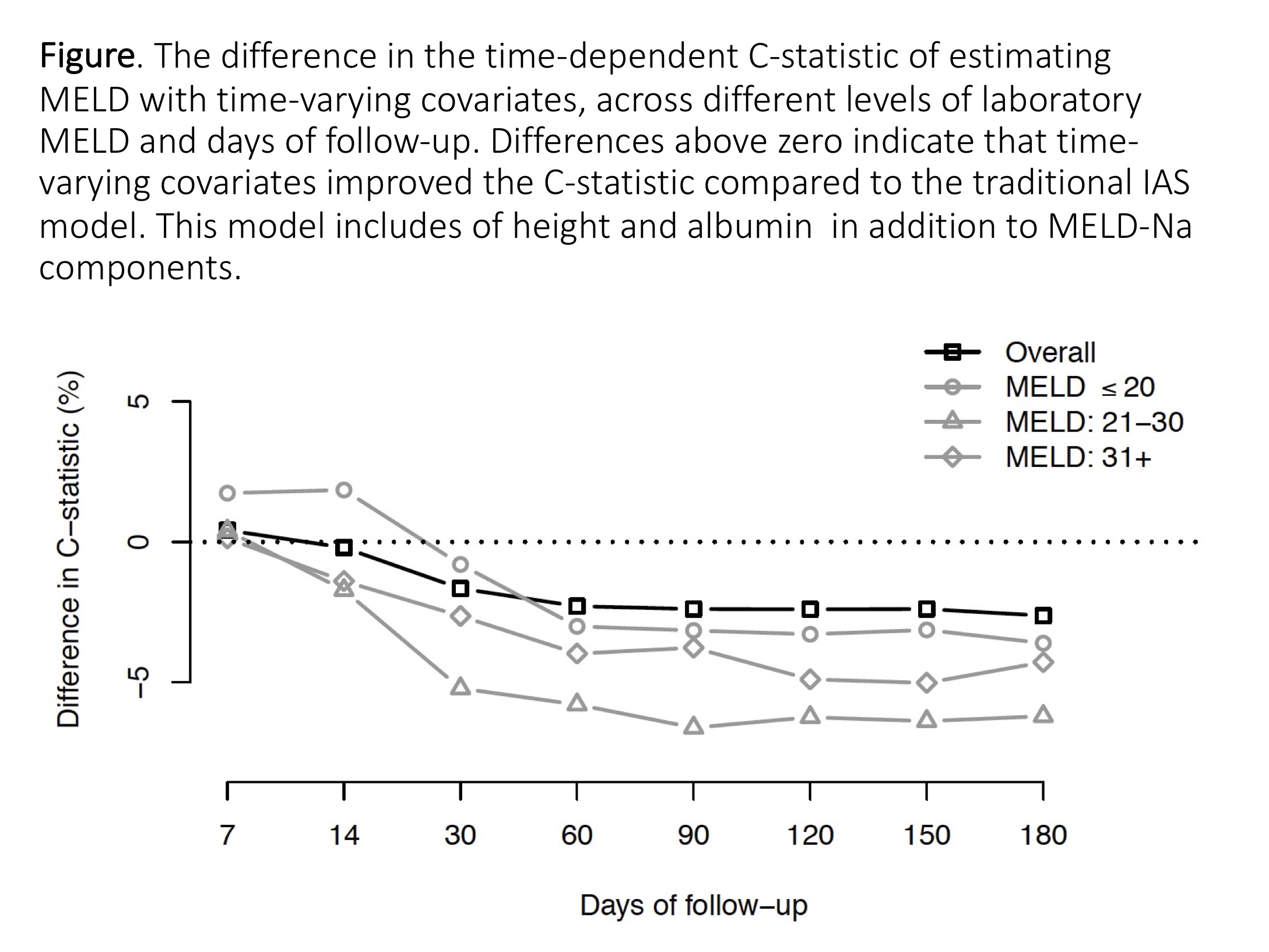Prediction of Waitlist Mortality in Liver Transplant Candidates: Do Time-Varying Models Help?
1Stanford University, Stanford, CA, 2Hennepin Healthcare Research Institute, Minneapolis, MN, 3University of Minnesota, Minneapolis, MN
Meeting: 2022 American Transplant Congress
Abstract number: 1113
Keywords: Allocation, Liver transplantation, Prediction models, Waiting lists
Topic: Clinical Science » Liver » 60 - Liver: MELD Allocation*
Session Information
Session Time: 7:00pm-8:00pm
 Presentation Time: 7:00pm-8:00pm
Presentation Time: 7:00pm-8:00pm
Location: Hynes Halls C & D
*Purpose: In the United States, priority on the liver transplant waitlist is determined by the model for end-stage liver disease (MELD)-Na, a score composed of serum bilirubin, creatinine, prothrombin time, and sodium. Evaluation of model performance has traditionally used candidate data from the first available timepoint (initial active status [IAS]), although additional datapoints are available for candidates remaining on the waiting list. It remains uncertain whether consideration of these datapoints would improve the performance of mortality prediction models such as MELD. We evaluated the effect of estimating mortality with time-varying covariates (TVC) instead of IAS.
*Methods: Using data from the Scientific Registry of Transplant Recipients (SRTR), we included adult liver transplant candidates listed in the United States between 2016 and 2019, with a random 70:30 split for model development and validation. IAS models considered values from the first active status during the study period, mirroring previous methodology, while TVC models considered values from each status update during active time on the waiting list as time-dependent variables. The Cox proportional hazards analysis estimated time from status update to waitlist mortality for MELD, MELD-Na, and variations on the MELD score including the addition of sex, height, and/or albumin. The concordance (C) statistic assessed predictive performance of each potential MELD score in the model validation set, and the time-dependent C-statistic was estimated for dropout within 7, 14, 30, 60, 90, 120, 150, and 180 days from the status update.
*Results: MELD-Na estimated using TVC was not superior to MELD-Na with IAS for prediction of 90-day waitlist mortality (C-statistic, 79.6% vs 82.9%). Compared with IAS models, TVC models demonstrated similar C-statistics for short-term waitlist mortality and worse C-statistics beyond 14 days (Figure). Penalized splines demonstrated a U-shaped association between serum sodium and waitlist mortality in the TVC model, which was not evident in the IAS model.
*Conclusions: Mortality prediction modeling using time-varying covariates from the waitlist follow-up period, although considerably more complex to implement, did not offer advantages over the traditional analytic framework based on initial active status.
To cite this abstract in AMA style:
Kwong A, Kim W, Schladt D, Wey A, Snyder J, Israni A, Lake J. Prediction of Waitlist Mortality in Liver Transplant Candidates: Do Time-Varying Models Help? [abstract]. Am J Transplant. 2022; 22 (suppl 3). https://atcmeetingabstracts.com/abstract/prediction-of-waitlist-mortality-in-liver-transplant-candidates-do-time-varying-models-help/. Accessed December 26, 2025.« Back to 2022 American Transplant Congress

